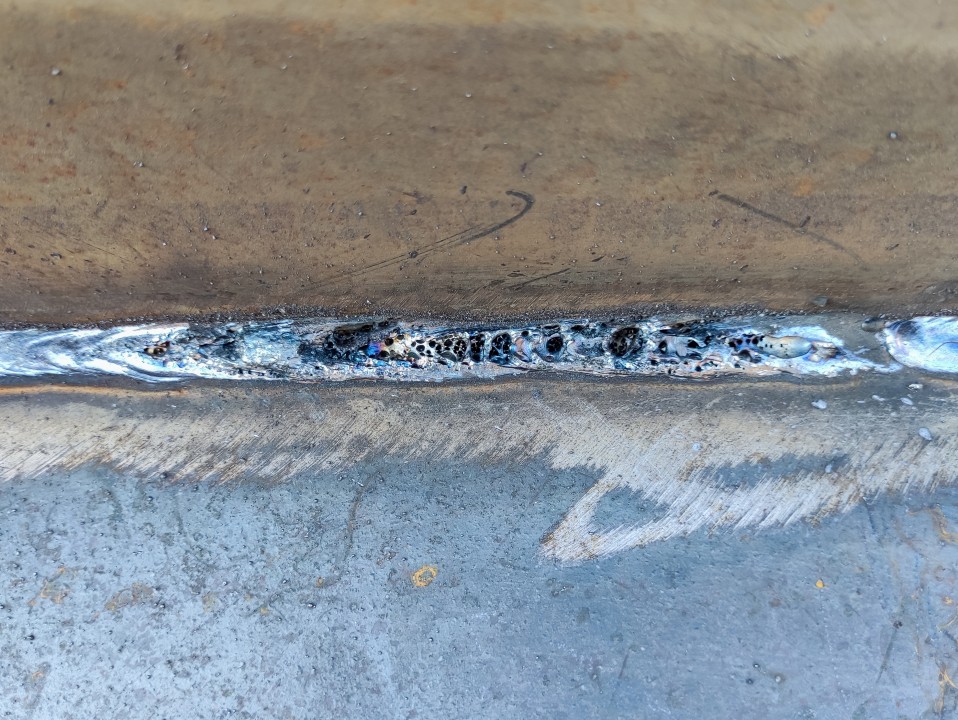Unwinding the Mystery of Porosity in Welding: Tips for Reducing Defects and Making The Most Of Quality
In the complex world of welding, porosity remains a consistent obstacle that can considerably affect the top quality and honesty of bonded joints. As we dive into the depths of porosity in welding, discovering the tricks to its avoidance and control will certainly be critical for experts seeking to understand the art of premium weldments.
Understanding Porosity in Welding
Porosity in welding, a common problem come across by welders, describes the existence of gas pockets or voids in the bonded product, which can jeopardize the stability and quality of the weld. These gas pockets are usually entraped throughout the welding procedure as a result of different factors such as inappropriate securing gas, contaminated base materials, or incorrect welding criteria. The formation of porosity can deteriorate the weld, making it susceptible to breaking and deterioration, ultimately causing architectural failures.
Comprehending the source of porosity is important for welders to effectively stop its occurrence. By acknowledging the importance of keeping proper gas securing, making certain the sanitation of base materials, and maximizing welding setups, welders can substantially lower the possibility of porosity formation. In addition, utilizing methods like preheating the base material, utilizing correct welding techniques, and carrying out complete evaluations post-welding can even more help in decreasing porosity problems. Overall, an extensive understanding of porosity in welding is vital for welders to generate premium and sturdy welds.

Typical Causes of Porosity
When inspecting welding processes for possible top quality problems, comprehending the usual causes of porosity is crucial for preserving weld stability and protecting against structural failings. Porosity, identified by the existence of cavities or voids in the weld metal, can dramatically endanger the mechanical properties of a bonded joint. One usual cause of porosity is incorrect shielding gas protection. Insufficient shielding gas circulation prices or inappropriate gas blends can cause atmospheric contamination, resulting in porosity development.
An additional prevalent root cause of porosity is the visibility of wetness and impurities externally of the base steel or filler material. When welding products are not appropriately cleansed or are exposed to high degrees of moisture, the evaporation of these pollutants during welding can create spaces within the weld bead. In addition, welding at inappropriate criteria, such as exceedingly high traveling speeds or currents, can create excessive turbulence in the weld swimming pool, trapping gases and creating porosity. By attending to these common reasons with correct gas shielding, product preparation, and adherence to ideal welding criteria, welders can decrease porosity and improve the quality of their welds.
Methods for Porosity Avoidance
Implementing effective preventative procedures is important in minimizing the occurrence of porosity in welding procedures. One method for porosity avoidance is ensuring proper cleansing of the base metal before welding. Contaminants such as oil, grease, rust, and paint can bring about porosity, so complete cleansing making use of appropriate solvents or mechanical methods is essential.

Making use of high-quality filler products and protecting gases that are ideal for the base steel and welding process can considerably check out this site reduce the risk of porosity. In addition, maintaining proper welding criteria, such as voltage, present, travel speed, and gas circulation rate, is essential for porosity avoidance.
Moreover, utilizing appropriate welding techniques, such as preserving a constant traveling rate, electrode angle, and arc size, can aid protect against porosity (What is Porosity). Ample training of welders to ensure they adhere to finest techniques and quality control treatments websites is also vital in minimizing porosity defects in welding

Ideal Practices for Quality Welds
One secret practice is preserving appropriate sanitation in the welding location. Extensively cleaning the work surface and bordering location prior to welding can aid minimize these problems.
One more finest method is to thoroughly choose the ideal welding criteria for the certain products being signed up with. This consists of setting the appropriate voltage, present, travel rate, and shielding gas flow price. Proper criterion option guarantees optimal weld infiltration, fusion, and general high quality. Making use of high-grade welding consumables, such as electrodes and filler steels, can significantly affect the last weld high quality. Buying premium consumables can result in more powerful, a lot more durable welds with fewer issues. By complying with these best techniques, welders can consistently create high-grade welds that meet market standards and surpass consumer assumptions.
Significance of Porosity Control
Porosity control plays a critical duty in making sure the stability and quality of welding joints. Porosity, characterized by the visibility of cavities or navigate here spaces within the weld metal, can substantially jeopardize the mechanical homes and structural honesty of the weld. Too much porosity damages the weld, making it a lot more prone to splitting, deterioration, and total failure under operational loads.
Efficient porosity control is necessary for preserving the wanted mechanical properties, such as strength, ductility, and strength, of the bonded joint. What is Porosity. By decreasing porosity, welders can enhance the total high quality and reliability of the weld, making certain that it meets the performance requirements of the designated application
Additionally, porosity control is important for attaining the desired visual appearance of the weld. Extreme porosity not only compromises the weld yet also interferes with its aesthetic charm, which can be critical in industries where aesthetics are essential. Correct porosity control techniques, such as using the right shielding gas, regulating the welding criteria, and ensuring proper cleanliness of the base materials, are essential for creating top notch welds with marginal problems.

Verdict
To conclude, porosity in welding is an usual defect that can compromise the top quality of the weld. By recognizing the root causes of porosity and applying proper prevention strategies, welders can lessen flaws and attain higher high quality welds. It is vital to control porosity in welding to make certain the honesty and stamina of the final item. Implementing best methods for porosity control is essential for attaining ideal welding results.